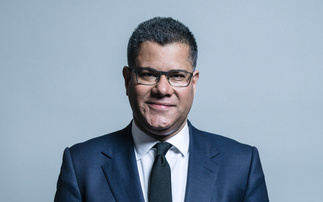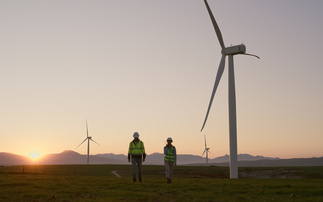The energy transition isn't just about producing renewable energy - investment and earnings opportunities are spread across four different areas, explain Schroders' Mark Lacey, Alexander Monk and Felix Odey
The energy transition involves shifting from a system based on fossil fuels - oil, gas and coal - to one dominated by clean, renewable electricity. Its aim is to reduce energy-related carbon dioxide emissions to help meet global climate targets.
Generating renewable energy is the most obvious part of the energy transition. However, it is only one aspect of the change. We have identified four distinct investment areas. As well as renewable energy generation, these are energy storage, electric transport infrastructure, and transmission & distribution networks.

Source: Schroders, October 2020
The transition is a long-term investment opportunity that will transform the entire energy system over the next 30 years and beyond. The crucial point is that to meet climate targets, investment will be needed across the entire value chain, i.e. all the areas mentioned above.
Given the need for investment, it's encouraging to see that governments are focusing on a 'green' recovery from the Covid-19 pandemic. For example, the EU plans to spend €550bn on green projects over the next seven years as part of its Covid recovery plan and 2021-27 budget.
The charts below demonstrate the scale of the challenge, and the opportunity. They show the estimated investment needed to keep temperature rises below 2 degrees; the current investment planned; and the market value of the four investment areas. These charts indicate that the energy transition is only just getting started.

What are the four areas of the energy transition?
1. Clean energy generation
Generating clean energy is the first step in the transition. This is an area where there has been, and continues to be, significant policy support from governments in terms of subsidies and other measures to encourage market growth.
As a result, clean electricity generation is perhaps one of the more advanced investment areas of the energy transition, but there's still a long way to go.
Demand looks set to rise as costs fall. Improvements in technology and economies of scale mean that renewable energy is now cost-competitive with fossil fuels, even without subsidies. And the desire of consumers for more emissions-friendly technologies - such as electric vehicles - is set to fuel the growth of clean power generation.
The move towards clean energy generation clearly creates new opportunities for utility companies with expertise in renewable power, as well as a fast-growing set of smaller independent power producers (IPPs) that solely develop and manage renewable assets.
It also benefits companies who produce renewable energy equipment, such as wind turbines and solar panels.
Away from renewable electricity, hydrogen has enormous potential to be a key fuel at the centre of a low carbon economy. While renewable electricity will solve a significant chunk of the global emissions puzzle, an energy source with greater power density and the appropriate chemical properties will be required to decarbonise activities such as heavy industrial processes, manufacturing and aviation.
Hydrogen can address this problem given its energy density, versatility and chemical reactivity - and the fact that when combusted it emits no CO2. Hydrogen can do almost everything natural gas does in the current economy, and can displace many of the non-power sector uses for coal and oil too.
Unlike wind and solar power though, it is still significantly more expensive to produce green hydrogen when compared to more carbon-intensive alternatives. That could change in the coming years with the EU, Japan, Korea and the US all targeting increased use of clean hydrogen in their economies.
2. Transmission and distribution
Generating power from renewable sources like wind and solar brings some specific challenges. Chief among these is that locations with the best characteristics for renewable generation - such as strong winds or high solar irradiation levels - are often not where the power is needed.
The US is a case in point here: the 'wind belt' is in the centre of the country, but most of the population lives on the coasts. Meanwhile, offshore wind farms present their own challenges. This is a big difference from conventional power plants, which can be built more or less anywhere.
Connecting new renewable projects to the electrical grid therefore creates investment opportunities for companies that manage the large-scale electrical transmission system.
The greater need for transmission lines creates a new need for electrical cables and other power equipment, benefiting these markets too. By 2050, the world will need to more than double the length of global power lines and transformers to enable the growth of renewables. If we do not, wind and solar farms will sit idle, unable to send their power to the grid.
Meanwhile, increased demand for electricity over other power sources will mean a higher daily load going through the electricity networks. Many existing networks will need to be replaced or upgraded if they are to be able to cope with this higher load and prevent frequent blackouts.
And to ensure the vast new demand for electricity can be appropriately managed, the entire power distribution network (the local system that connects power lines to homes) needs to be upgraded with stronger and smarter technologies. Utilities in charge of these networks will be well-placed to benefit. But so too will those companies that make critical electrical components (sub-stations, transformers, etc.).
It will also be important to make networks as efficient as possible. On average, between five per cent and ten per cent of all electricity produced is lost on the grid due to inefficient distribution systems. This needs to be improved.
3. Energy storage
Just as renewable energy isn't always produced where it's needed, so it's not always produced when it's needed. Vast amounts of cheap power can be generated when the wind and sun are at their strongest, but what happens when the sun doesn't shine and the wind fails to blow?
This is where energy storage comes in. Storage solutions can help manage this intermittent power supply and ensure that electricity is there when it's required. As the need for storage becomes clearer, opportunities are emerging for expert battery operators, as well as those companies that design and manufacture the growing range of storage products.
4. Electric transport infrastructure
The need for storage becomes clear when we consider how demand for electricity is likely to change with the rising popularity of electric vehicles. The ability to charge EVs, whether at home or out and about, will become increasingly crucial. As the number of EVs in the global fleet rises, so too must the number of chargers. According to the European Commission, if the ratio of vehicles to charging points exceeds 10, then the average consumer will start to be discouraged from purchasing an EV in the first place.
The potentially huge earnings opportunities from the manufacturing, installation and operation of charging points has already attracted a range of different players, including utilities, new pure-play companies and even the oil and gas majors.
Mark Lacey is head of commodities at Schroders, while Alexander Monk and Felix Odey are both global renewables analysts at the investment firm.
Schroders is a partner of the Net Zero Festival.







